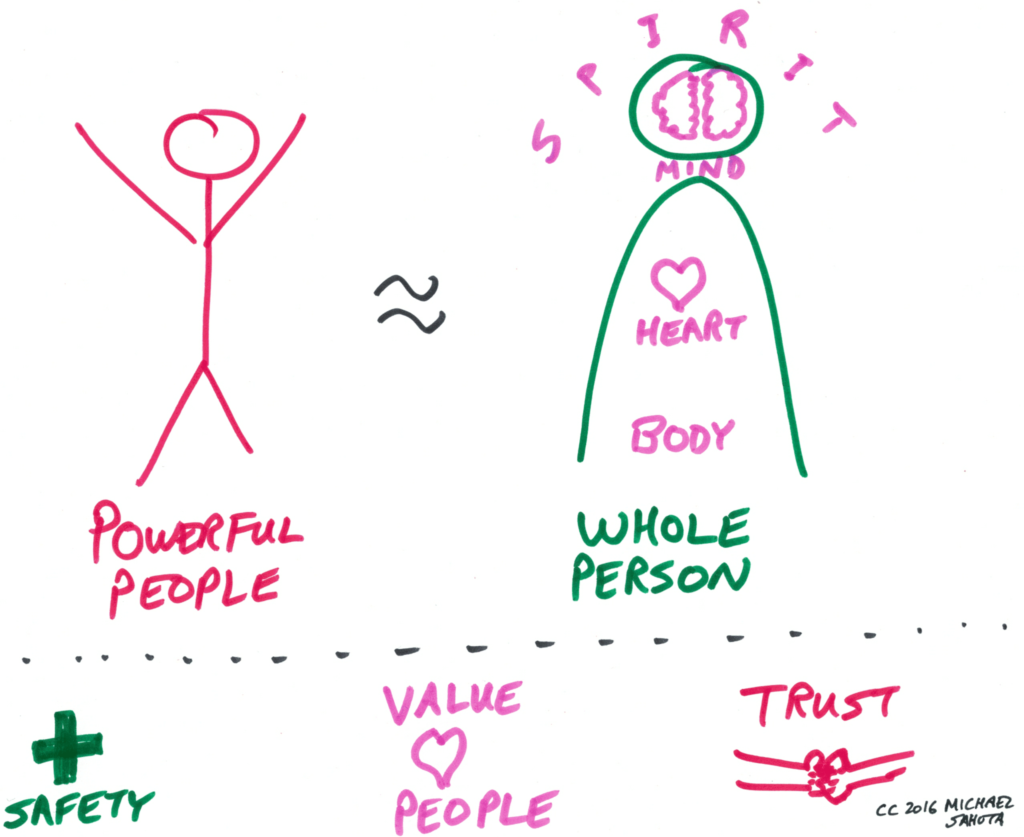In this post I will share how to unleash the power of individuals in your organization by inviting in the whole person.
Below is the visual summary. People are powerful when we invite the whole person to work: spirit, heart, body, and mind. Key environmental ingredients are: safety, trust and valuing people as human beings.
#2 TED Talk: Your Body Language Shapes Who You Are
This post was inspired by the #2 Ted Talk of all time: “Your Body Language Shapes Who You Are” by Amy Cuddy. She shares the secret to becoming more powerful at work: Simply change your body posture for 2 minutes. Wow! Check out the video!
When I was watching the video, I was reflecting on why some environments foster powerful people and others are oppressive. This is what inspired me to share my understanding of how this works: How to invite the whole person to work every day.
The Whole Person is Powerful
Spirit + Heart + Body + Mind = Whole Person
In our schools and work environments we typically only welcome the analytical left brain, not the whole person. It’s a tragedy of waste of human potential.
Successful organizations unleash the power of the whole person. It seems pretty obvious that by welcoming all the talents a person has to offer, we may find greater levels of success.
There is a lot of industry work around Engagement and Happiness. These efforts are valuable. My perspective is that these are both valid ways of inviting the whole person to work.
Just to be clear, this is not about soft, mushy stuff. It’s about success and results.
Cultivating Whole Person Work Environments
What do we need to do to invite the whole person into our workplace?
There are three critical ingredients:
People need to feel safe. To learn. To ask for help. To take risks. To make mistakes.
We need to value people as human beings to invite the whole person. Why would they show up if they are not valued?
The final key ingredient is trust. People who feel trusted have the confidence to make good decisions and take risks needed to achieve great outcomes. This goes hand-in-hand with safety.
Where to Learn More
The above can be seen as a perspective of my VAST model where key drivers for amazing results are: Vulnerability, Authentic Connection, Safety, and Trust.
Another good model for understanding issues impacting safety and human potential is SCARF (Status, Certainty, Autonomy, Relatedness, Fairness) model by David Rock.
Teal organizations (from Reinventing Organizations) provide great examples of environments where the whole person is fostered. A must-read.




